Jennifer Mrva, who recently received her certificate as a journeyman, oversees the three planting seasons in the Colonial Garden. In February, the hotbeds are prepared for cabbage, lettuce, onions, celery, peas, tomatoes and peppers. In April and May, the gardeners plant beans, carrots, squash, melons and the flowers that might be found in "a gentleman's garden in Colonial times." And in the fall, there's cabbage, kale, lettuce and vegetables to tend.
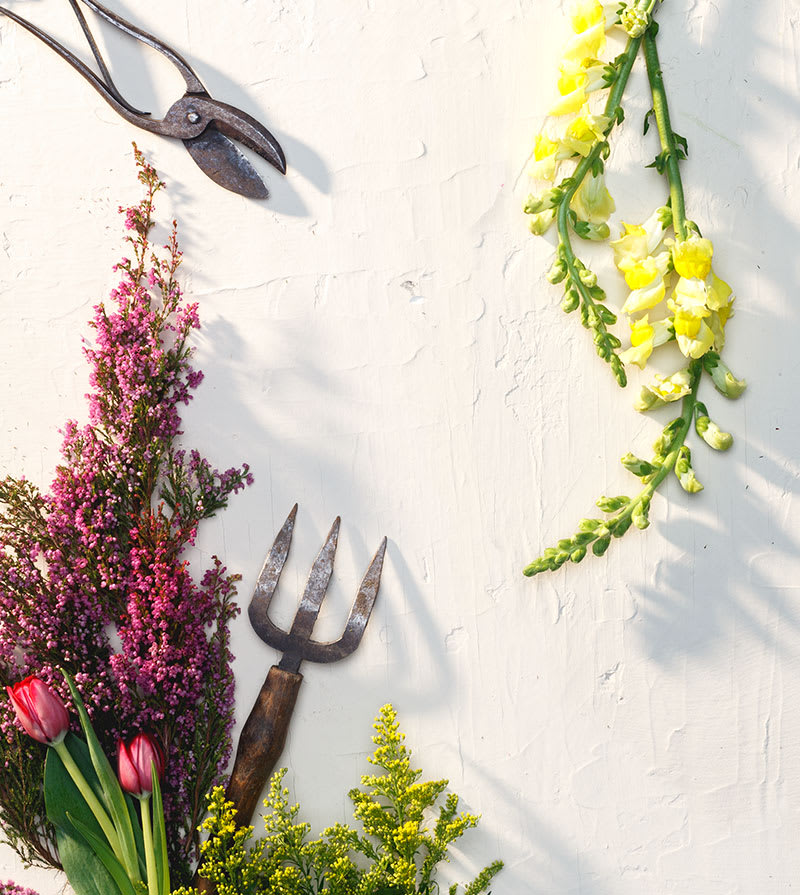
In our Winter issue, we asked you to send us your gardening questions and you rewarded us with a lot of good ones. A sample of Jen's answers are here. We've also added some information on some of Jen's favorite herbs and flowers that would have been found in the 18th century.
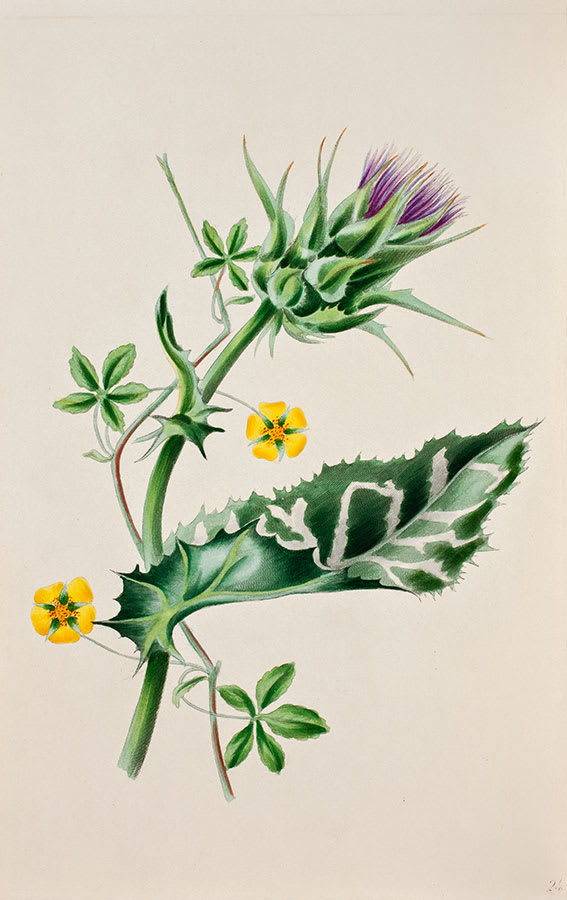
What plants were used for dyes for clothing? - Jim Gillgam, Greensboro, N.C.
There are many kinds of plants that can be used to dye cloth. Indeed, so many I could scarce mention them all. Here are the ones that are most commonly grown and used here.
Indigo (Indigofera tinctoria) is a leguminous plant that is an excellent source of blue dye and is still used today for dyeing blue jeans. Another source of blue dye comes from the woad plant (Isatis tinctoria). Woad has been used for centuries for dyes and paints. It is in the brassica family, which includes cabbage. It prefers growing in a cooler time of year. The process of fermenting the leaves is very unpleasant because of the odor, but the stunning color is well worth the effort.
Another one of my favorite dye plants that we grow at the Colonial garden is the Matter plant (Rubia tinctoria). The roots can produce a beautiful range of oranges, peaches and reds, depending on the age of the roots used. The plant can become somewhat invasive, so we've given ours plenty of space for its roots to grow.
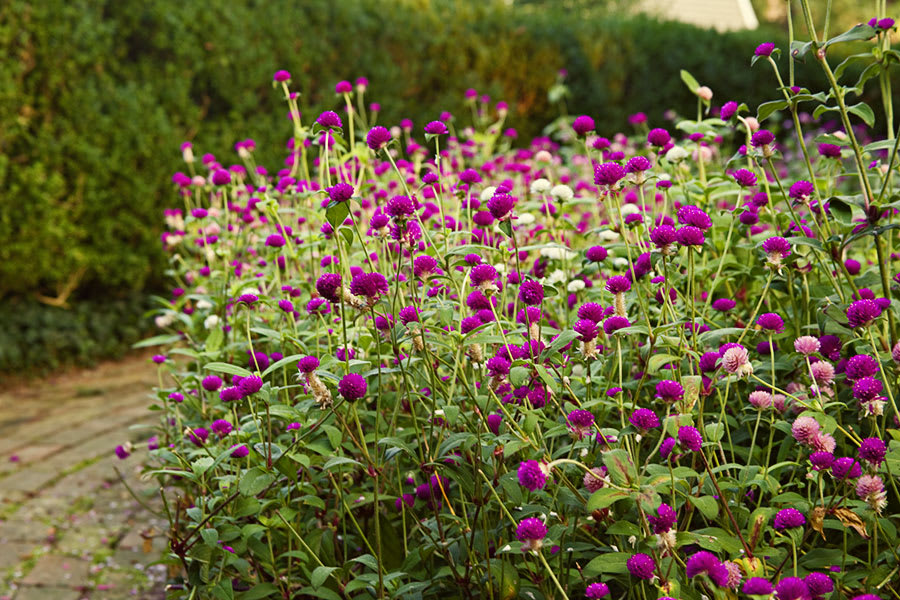
What was the most popular flower grown just to pretty things up? - Sara Neal, Fletcher, Ariz.
There are so many wonderful examples of beautiful vibrant flowers that were being grown during the 18th century. Several kinds of bulbs were commonly used for adding a pop of color in the garden. Things like narcissus, tulips, fritillaria, hyacinth and lilies are just some examples of flowers that could create a spectacular show.
Records show that the globe amaranth (Gomphrena globosa), a summer annual, was sold here in Williamsburg. It does very well in the dry hot summers of Virginia and makes an excellent cut and dry flower. It can be white, pink or purple.
Potted plants are also a wonderful way of incorporating and rearranging plants throughout the seasons. One of my favorite potting plants that was incredibly popular during the Colonial period is the geranium (Pelargoniums). We grow several kinds in the Colonial Garden that never cease to produce a stunning show from year to year. The P. cucullatum produces more of a vining structure with lovely lavender to pink blossoms while the P. inquinans grows more upright in a tree shape and has bright red flowers and paler green foliage.
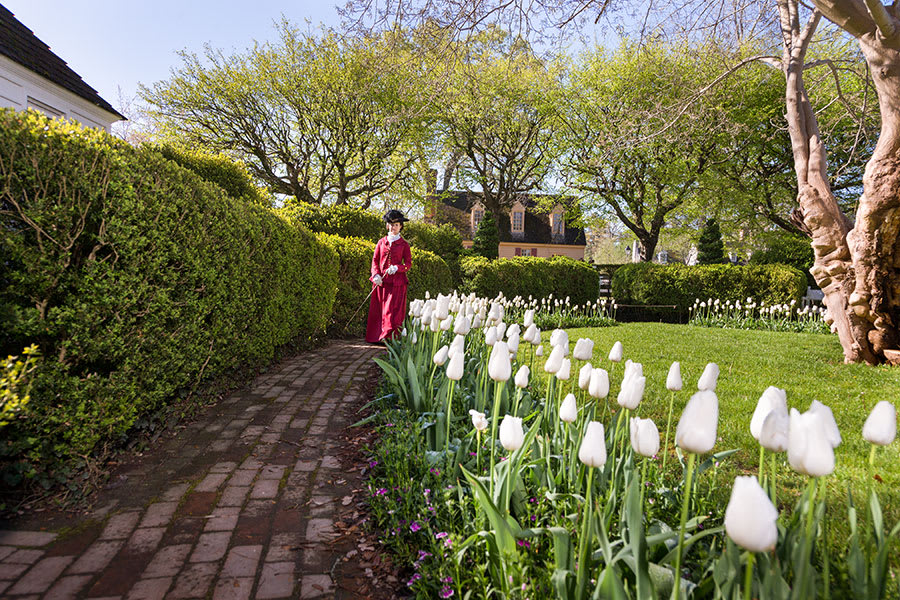
The tulips are so special at Williamsburg. Do you save the bulbs and replant them from year to year? Were they grown in Williamsburg in Colonial times? - Brian and Linda Sammon, via Instagram
Nothing says spring like the brilliant colors of a tulip. Every fall we plant our precious tulips and quite forget about them till the gloom of winter makes us eagerly look for the first signs of their leaves poking through the soil. Several of the stores in and around Williamsburg listed tulip bulbs as one of their commodities. We grow several kinds of tulips in the Colonial Garden and they are all varieties that were known before the 1800s. We even have one of the oldest-known tulips, called "Duc van Tol," which dates to before the 1600s. This remarkable little tulip has blood-red petals and is gilded in gold. Since hot Virginia summers aren't conducive to most tulips, they are dug up and stored after their blooms and greens have died back and are replanted in the fall.

How did 18th-century gardeners amend the red clay to get good soil? - Patti Wheetman, Johnson City, Tenn.
Heavy clay soil is one of the reasons many of us dread the start of a new garden bed. Beautiful garden soil can take years to develop. At the Colonial Garden, we use an incredible amount of composted material each year. The key is remembering to replenish your soil often and not be too stingy! Healthy soil grows healthy plants! Eighteenth-century gardeners wrote whole treatises just on composting manure to improve your soil. We generally add a wheelbarrow of manure every time we are about to plant a new crop. In the fall, we also dress the top of most of the beds with composted manure. Each bed might receive around 4 to 6 inches of composted manure a year, just to give you an idea. We also have several other piles that — when finished composting — can be used to "bulk" up the soil. Garden waste such as dead leaves, sticks, straw, vegetable matter and some weeds will break down to a nice fluffy consistency that will vastly improve heavy clay soil.
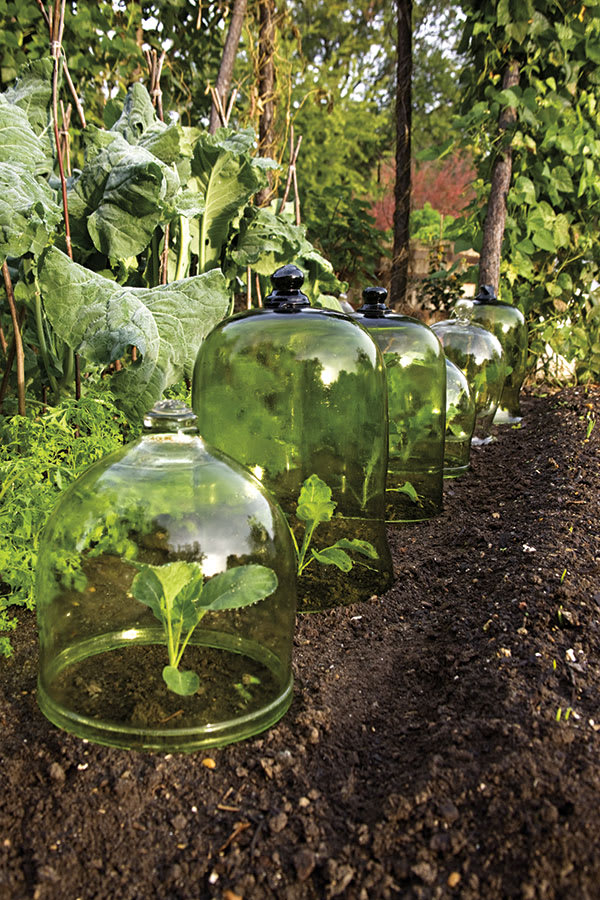
I've seen those glass domes in your gardens. What are they and how do they work? - Susie Jones, Canton, Ohio
The bell jars are one of my favorite tools to use in the garden. It's a way in which I can control the environment — be it temperature or humidity — and extend my growing season. Plants that are more sensitive to frost, like lettuce and parsley, can endure cooler temperatures, but frost will "burn" the leaves. On evenings that I expect a frost, I place a glass bell over individual plants. When temperatures climb above freezing and I see that the frost has melted off the glass, off it comes like a jacket on a warm spring day. Glass bells can also raise the humidity level around the plant, which is helpful when transplanting and propagating cuttings. Plants that have been disturbed around the roots benefit from high humidity, which can help them re-establish faster with less stress. I've even found ways of using glass bells to protect a precious melon from hungry squirrels!
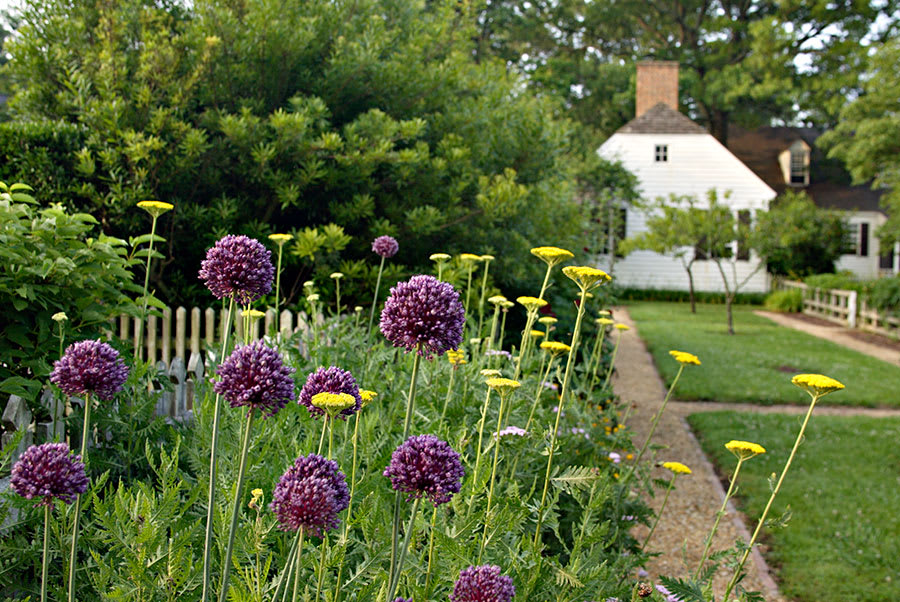
What is the significance of the Yorktown onion? - B.J. Guenther, via Instagram
Few people realize that the Yorktown onion is actually a leek! The Allium ampeloprasum was believed to have come over in animal feed from Europe. Although this protected plant is not native to this country, it has happily naturalized in many of the fields and ditches along the Colonial Parkway, where these plants are admired every spring for their cheery purple nodding heads.
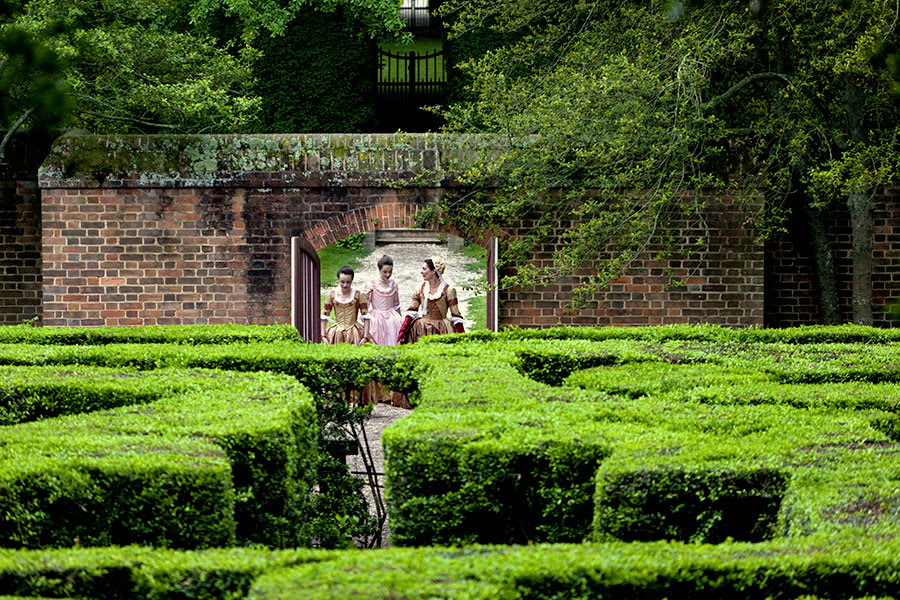
I purchased an English boxwood in July to bring to our home in Wisconsin. It is indoors currently enjoying a nice warm winter! When I plant it outside this spring, are there any special suggestions you might have? More or less sun? Special soil additives? Care and trimming? - Jeff Kottke, Wisconsin
Boxwood are shallow-rooted bushes that like a nice loose, evenly moist and well-drained soil. It's important in its first year especially to water it often, especially through the summer. I like to work several spades of compost into the surrounding soil. Even if you have poor soil, it is important to leave the native soil and just amend it a bit if you can.
In Southern climates, the stress for a boxwood is the intense hot summers, so the ideal site might be where they would receive a bit of shade in the hottest time of the day. In Northern climates, the challenge is the cold winds during the winter months, so try to place it where it will receive some protection from strong winter winds.
Boxwood likes soil more on the alkaline side (6.5-7). I usually feed the boxwood in early spring or fall by applying fertilizers around the base of the plant. (10-6-4 is the suggested rate of nutrient levels for boxwood.)
English Boxwood needs to be pruned only once a year with a growing rate of 1 inch per year. Be patient and wait for the new light green foliage in the spring to age and turn that deeper green. Once the leaves start to age, their productivity goes down and it's safe to prune. In Virginia, we usually prune in June.